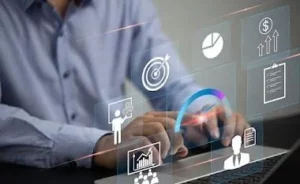
Edu trends: Navigating the Educational Landscape in the 21st Century
In a rapidly changing world, the field of education undergoes constant transformation. Edutrends, short for educational trends, encapsulates the dynamic shifts in how we approach learning and teaching. From traditional classrooms to the digital age, the journey of education has been marked by innovation, challenges, and a continuous quest for improvement.
I. Introduction
Definition of Edutrends
Edutrends refer to the ever-evolving patterns and practices in education, encompassing changes in teaching methods, learning environments, and educational technologies. Staying abreast of these trends is crucial for educators, students, and policymakers alike.
Importance of Staying Updated in Education
The ability to adapt to new educational trends ensures that students receive the most effective and relevant learning experiences. It also equips educators with the tools needed to engage students in a rapidly evolving landscape.
II. Evolution of Edutrends
Historical Overview
The roots of edutrends can be traced back through the annals of educational history. From the advent of formal schooling to the industrial revolution’s impact on education, each era brought its own set of changes.
Impact of Technology on Educational Trends
The 21st century has witnessed an unprecedented influence of technology on education. The integration of digital tools, online platforms, and interactive resources has reshaped the way we perceive and deliver knowledge.
III. Current Edutrends
Online Learning Platforms
The surge in online learning platforms has revolutionized access to education. From massive open online courses (MOOCs) to virtual classrooms, learners now have the flexibility to pursue knowledge from anywhere in the world.
Personalized Learning Paths
Recognizing the diversity in learning styles, personalized learning paths cater to individual student needs. Adaptive learning technologies assess and tailor content to match the pace and preferences of each learner.
Gamification in Education
Gamification injects an element of fun into learning, transforming educational content into interactive games. This approach enhances engagement, motivation, and retention among students.
IV. Future Projections
Emerging Technologies
The future of edutrends lies in emerging technologies such as virtual reality, augmented reality, and artificial intelligence. These innovations hold the potential to create immersive and personalized learning experiences.
Integration of Artificial Intelligence
Artificial Intelligence (AI) is expected to play a pivotal role in education, from automating administrative tasks to providing personalized feedback and insights into student performance.
Global Collaboration in Education
The interconnected nature of the world calls for global collaboration in education. Virtual exchanges, collaborative projects, and international partnerships contribute to a more comprehensive and inclusive educational experience.
V. Challenges in Edutrends
Accessibility Issues
Despite the advancements, accessibility remains a challenge. The digital divide and unequal access to resources create barriers to edutrend integration.
Balancing Traditional and Modern Approaches
Finding the right balance between traditional teaching methods and modern edutrends is crucial. A harmonious blend ensures a holistic and effective educational experience.
VI. How Edutrends Influence Teaching Methods
Teacher Training Programs
As edutrends evolve, it becomes imperative to equip educators with the skills needed to navigate these changes. Ongoing teacher training programs are essential for professional development.
Shifting Classroom Dynamics
The introduction of edutrends reshapes the dynamics of the classroom. The traditional role of teachers expands to include facilitation, guidance, and leveraging technology to enhance learning.
VII. Benefits of Embracing Edutrends
Improved Student Engagement
Edutrends, when implemented effectively, lead to increased student engagement. Interactive and dynamic learning experiences capture students’ attention and foster a genuine interest in the subject matter.
Enhanced Learning Outcomes
The adaptability and personalization inherent in edutrends contribute to improved learning outcomes. Students are better equipped to grasp and retain information, leading to academic success.
VIII. Case Studies
Successful Implementation Stories
Examining successful cases of edutrend integration provides valuable insights. These case studies highlight effective strategies and best practices for educators and institutions.
Lessons Learned
Analyzing challenges faced and lessons learned from edutrend implementation helps refine future strategies. Understanding the nuances ensures a smoother transition to innovative educational practices.
IX. Tips for Adapting to Edutrends
Continuous Professional Development
Continuous professional development is key to staying relevant in the ever-changing landscape of education. Educators must actively seek opportunities to enhance their skills and embrace new technologies.
Creating a Tech-Forward Learning Environment
Institutions should focus on creating a tech-forward learning environment. This involves investing in infrastructure, providing access to digital resources, and fostering a culture of innovation.
X. Edutrends and Career Readiness
Aligning Education with Industry Demands
Edutrends play a crucial role in aligning education with the ever-evolving demands of the workforce. Ensuring that curricula reflect industry needs prepares students for successful careers.
Skill Development in the Digital Age
The digital age demands a diverse skill set. Edutrends emphasize not only academic knowledge but also the development of critical thinking, problem-solving, and digital literacy skills.
XI. Critiques and Debates
Ethical Considerations in Edutrends
As technology becomes more ingrained in education, ethical considerations arise. Privacy concerns, data security, and the ethical use of AI in learning environments must be carefully addressed.
Balancing Standardization and Innovation
Striking a balance between standardized educational practices and innovative approaches is a constant debate. While standardization ensures consistency, innovation allows for adaptability to individual needs.
XII. The Role of Edutrends in Lifelong Learning
Importance Beyond Formal Education
Edutrends extend beyond formal education, influencing the concept of lifelong learning. The ability to adapt and learn continuously becomes an essential skill in navigating the complexities of the modern world.
Continuous Learning in the Modern World
In a world of rapid change, the concept of continuous learning gains prominence. Edutrends contribute to a mindset of lifelong learning, empowering individuals to stay relevant throughout their lives.
XIII. Edutrends and Student Perspectives
Student Engagement and Feedback
Understanding how students perceive and engage with edutrends is crucial. Collecting feedback and incorporating student perspectives ensures that educational practices align with their needs and preferences.
Impact on Motivation and Interest
Edutrends directly impact student motivation and interest in learning. By catering to diverse learning styles and interests, educators can create an environment that fosters a genuine passion for acquiring knowledge.
XIV. Government Initiatives and Policies
Supporting Edutrend Integration
Government initiatives and policies play a pivotal role in supporting edutrend integration. Adequate funding, infrastructure support, and policy frameworks are essential for successful implementation.
Challenges in Policy Implementation
While policies may support edutrends, challenges in implementation often arise. Identifying and addressing these challenges ensures that the intended benefits of edutrends reach all educational levels.
XV. Conclusion
Recap of Key Points
Edutrends, the ever-evolving landscape of education, necessitate a proactive approach to stay relevant. From historical roots to future projections, understanding and adapting to these trends are crucial for educational success.
Looking Ahead: The Constant Evolution of Edutrends
As we conclude our exploration of edutrends, it’s evident that the journey is ongoing. The constant evolution of education through innovative trends is a testament to the adaptability and resilience of the educational landscape.
https://projectworking0.blogspot.com/2023/11/empowering-minds-revolution-of_16.html

